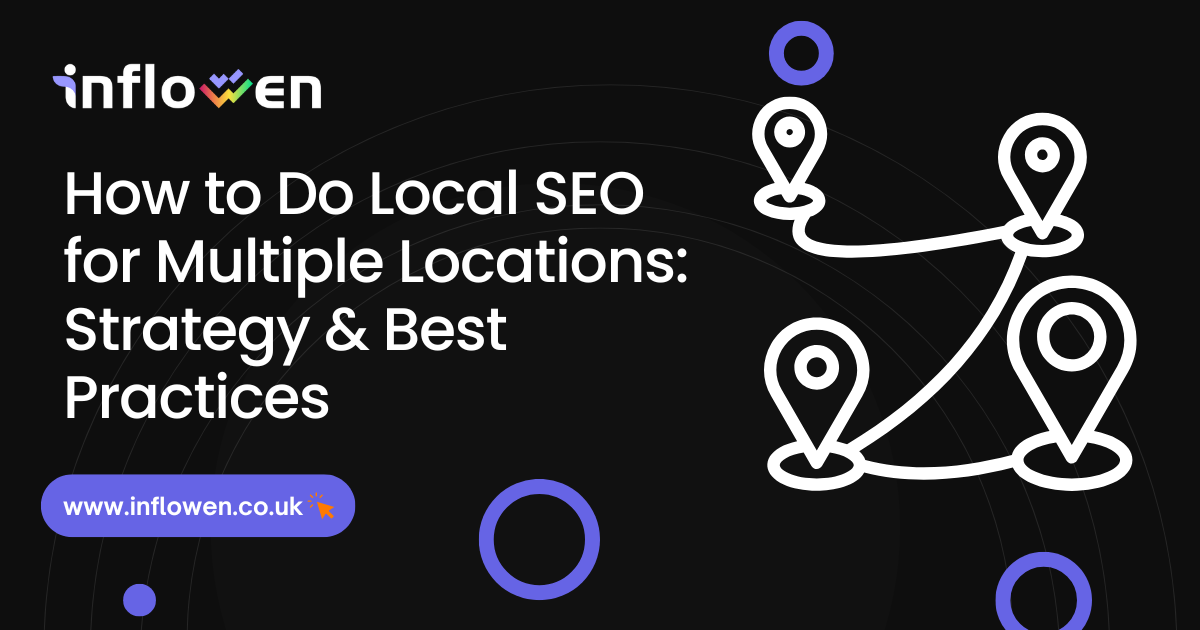Running a restaurant today means more than just serving great food—it means showing up when people search online. Whether someone asks Siri, “best brunch café near me,” or types “steakhouse open now” into Google, you want your restaurant to be the top result. That’s where SEO for Restaurants comes in. It’s the process of improving your online visibility so more diners can discover, book, and visit your location, especially through mobile and voice search.
Recent studies show that over 90% of consumers search online before choosing where to eat, and Google’s algorithm favors restaurants with fast-loading sites, strong local signals, and optimized listings. From neighborhood diners and food trucks to upscale bistros and farm-to-table restaurants, SEO can help every kind of eatery thrive in competitive search results.
In this guide, you’ll learn 17 practical SEO tips specifically for restaurant websites—each one tailored to boost local rankings, drive traffic, and convert hungry searchers into loyal guests.
Table of Contents
What is SEO for Restaurants?
SEO for Restaurants is a process of improving a restaurant’s online visibility in search engine results, especially for local and food-related searches. It involves optimizing your website, Google Business Profile, third-party listings, and content to attract more organic traffic from people searching for dining options. For example, when someone searches “best Mexican restaurant in Chicago” or “family diner near me,” SEO helps your business show up at the top.
Restaurant SEO combines standard SEO practices (like keywords, meta tags, and site structure) with location-specific tactics such as Google Maps optimization, local citations, and structured data (schema markup). It also includes managing reviews, optimizing for mobile, and ensuring your site delivers a fast, user-friendly experience. The goal is to rank higher for relevant searches, drive more website visits and foot traffic, and ultimately convert visitors into loyal customers.
What are the Advantages of Local Restaurant SEO?
SEO offers a range of benefits for restaurant owners. First, it increases visibility where it matters most—online searches for local dining. Appearing at the top of Google means more people are likely to visit your website or click “Directions.” It also boosts credibility; diners trust top-ranking results more. With SEO, you can compete with larger chains by targeting niche keywords or location-specific terms, like “farm-to-table restaurants in New York.”
Another key advantage is cost-effectiveness. Unlike paid ads that stop delivering once the budget runs out, SEO continues to bring in traffic long-term. It also helps you build brand awareness, gain more positive reviews, and attract diners searching for specific dishes or dietary needs. Whether you’re a café, buffet, steakhouse, or takeaway joint, SEO helps bring your food to the people who are searching for it.
Why SEO Strategy is Crucial for Restaurants?
An effective SEO strategy is crucial for restaurants because the way people discover places to eat has changed. Instead of relying on word-of-mouth or walking by, most diners now search online using queries like “best Leeds restaurant near me” or “vegan café open now.” If your restaurant isn’t showing up on Google, you’re missing out on valuable foot traffic and online orders.
SEO helps you rank higher in search results, especially in the “Local 3-Pack”—the map listings that appear above traditional results. This visibility leads to more clicks, calls, reservations, and reviews. It also builds trust; users are more likely to visit restaurants with a strong online presence, complete with photos, menus, and customer reviews.
More importantly, SEO gives you control over how your business appears online. With the right strategy, you can optimize your website, Google Business Profile, and directory listings to attract your ideal customers. Whether you’re a small family-run diner or a large multi-location chain, SEO ensures you’re visible when and where people are searching for your food.
How Does SEO Work in the Restaurant Industry?
SEO works for restaurants by improving how search engines understand, index, and rank your content. It starts with keyword research to target what people are actually searching for (e.g., “vegan café in Manchester” or “best steakhouse in Dallas”). Then, it moves into on-page SEO (optimizing your site titles, content, menu pages, and headings) and off-page SEO (getting backlinks and reviews).
Search engines prioritize mobile-friendly, fast-loading, and locally relevant websites. That’s why restaurants should focus on local SEO signals like consistent NAP (Name, Address, Phone), schema markup, customer reviews, and Google Business Profile optimization. A combination of content, technical setup, and user signals (like time on page, bounce rate, and clicks) helps search engines decide whether to show your restaurant to searchers.
Let’s break down the best practices to make this happen.
17 Local SEO Best Practices to Optimize Your Restaurant Website
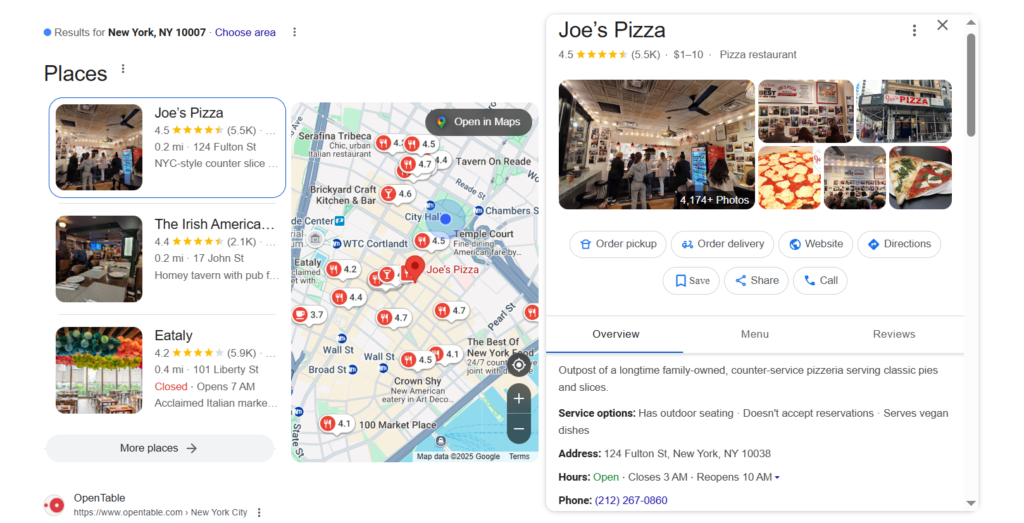
1. Register and Optimize Your Google Business Profile
Start by claiming your Google Business Profile (GBP). Make sure your Name, Address, and Phone (NAP) are correct and match your website and other listings. Upload high-quality images of your dishes, dining area, and team—it helps your listing stand out. Add your full menu, include features like outdoor seating or vegan options, and update your opening hours regularly. Enable messaging and include a booking or order link if possible. Embed your Google Map on your contact page.
Most importantly, encourage diners to leave reviews and respond to them promptly. A well-managed GBP boosts visibility in Google’s local results and maps, especially for searches like “family-friendly café near me” or “steakhouse in [city].” It’s one of the most powerful tools for restaurant SEO and should be kept up-to-date.

2. Get Listed on Third-Party Review and Food Sites
Beyond Google, diners often search review sites like Yelp, TripAdvisor, OpenTable, Zomato, Just Eat, and Deliveroo. These platforms help reinforce your online presence and drive extra traffic. Create or claim your listings and make sure your NAP details are consistent across them. Add links to your menu or booking system when available. Ask customers to leave reviews and respond to feedback—both positive and negative—in a professional, friendly tone.
Engaging with reviews shows you value customer input and boosts trust. These listings also provide valuable backlinks and local SEO signals to search engines. Plus, having your restaurant show up on multiple platforms increases your chances of getting discovered by new diners, especially those using food delivery or restaurant discovery apps.
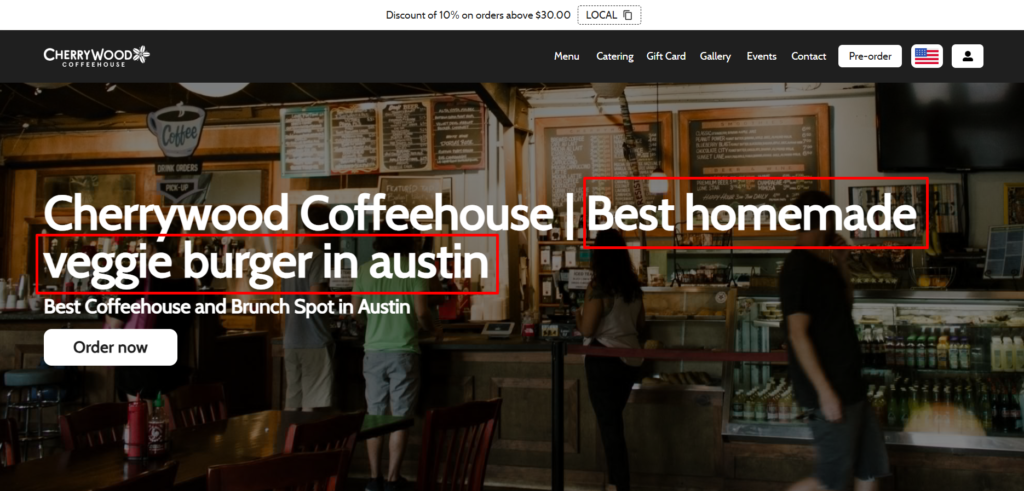
3. Include Local Keywords & Schema Markup
Local keywords help your restaurant rank for area-specific searches. Use phrases like “Italian Restaurant in Chicago” or “Vegan Burgers in Austin” naturally throughout your content. Focus on location + cuisine or dish combinations. Also, add structured data to your site using the LocalBusiness and Restaurant schema. This helps search engines understand details like your address, hours, menu, and reviews.
Schema markup can improve your appearance in search results with features like star ratings or menu links. It’s especially useful for voice search and mobile results. For example, someone asking “What’s the best Thai restaurant near me?” is more likely to see your listing if your schema is correctly implemented. It’s a behind-the-scenes boost that can make a real difference.

4. Keyword Planning & On-Page SEO
Start with keyword research—use tools like Google Keyword Planner or Semrush to find what people search for in your area. Focus on long-tail terms like “gluten-free dessert café in Seattle” or “kid-friendly brunch in Miami.” Once you have your keywords, use them in page titles, meta descriptions, H1-H3 headings, and throughout your content.
Avoid keyword stuffing—keep usage natural and relevant. Add internal links between your main pages, such as linking your homepage to your menu or About page. Include cuisine-specific terms like “farm-to-table,” “seafood platter,” or “buffet dining” in key locations. Well-optimized pages tell Google exactly what your restaurant offers, making it easier to match your site with the right searches.

5. Make Your Website Mobile-Friendly
Most people searching for restaurants use their phones, so your website must be responsive. It should look good and function smoothly on all screen sizes. Use a clean design with easy-to-read fonts and buttons that are big enough to tap. Include click-to-call and “Get Directions” buttons for fast actions.
Speed is also important—slow sites frustrate users and get penalized in rankings. Compress images, use a fast hosting provider, and limit animations or popups on mobile. Google uses mobile-first indexing, meaning it ranks your site based on how it performs on mobile devices. A fast, user-friendly mobile site improves both your SEO and customer experience.

6. Add Essential Features for User Experience
Your website should make it easy for diners to interact. Add clear call-to-action (CTA) buttons like “Book a Table,” “Order Online,” or “View Menu.” Display your live menu with prices, photos, and dietary tags like gluten-free, vegan, or halal. Include online ordering (OLO) and reservation features directly on your site or through integrations like OpenTable or ToastTab. Make your contact info and hours easy to find, especially on mobile.
Customers expect a smooth experience—if they can’t find what they need quickly, they’ll move on. Adding these user-focused features helps increase engagement, reduce bounce rates, and improves your overall SEO performance.
7. Fulfill Technical SEO Essentials
Technical SEO makes your website easier for search engines to crawl and understand. Start with a fast page load speed—use tools like Google PageSpeed Insights to identify issues. Compress large images, enable browser caching, and use modern file formats. Secure your site with HTTPS for safety and credibility.
Create a clear, simple URL structure like yourrestaurant.com/menu/brunch instead of random codes. Add ALT text to all images for accessibility and SEO. Submit an XML sitemap to Google Search Console to ensure all your pages are indexed. Technical SEO is invisible to users but critical for search visibility and ranking consistency.
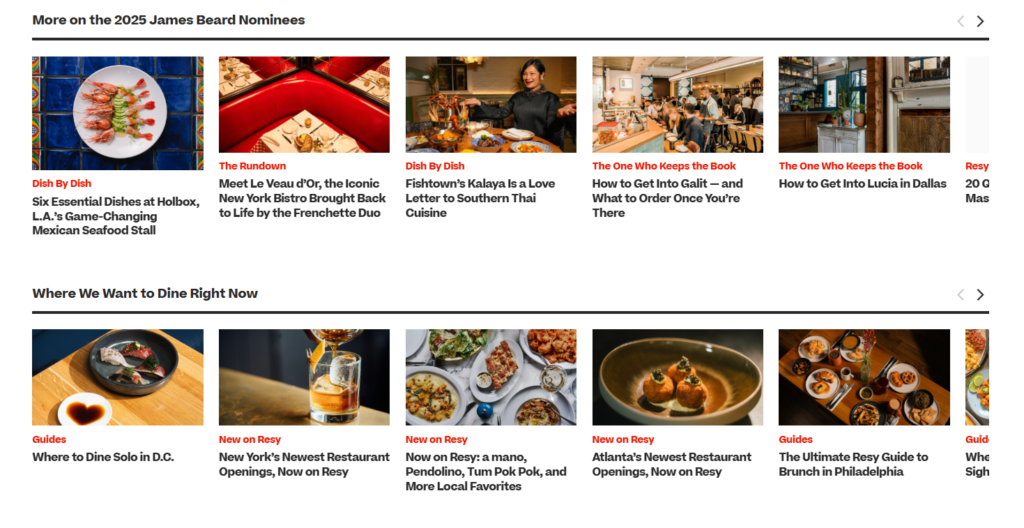
8. Launch a Restaurant Blog
A blog gives your site fresh content and more opportunities to rank. Share stories about your chefs, seasonal dishes, events, or cooking tips. Create listicles like “Top 5 Cocktails in [City]” or “Best Local Brunch Spots”—including your own! Blogging helps target long-tail keywords and improves internal linking. It also positions your restaurant as an authority in your niche or region.
For example, a farm-to-table restaurant might post about sourcing local produce. Make your posts useful and fun to read, and optimize titles and images. Regular blogging builds topical relevance and keeps your website active in the eyes of search engines.
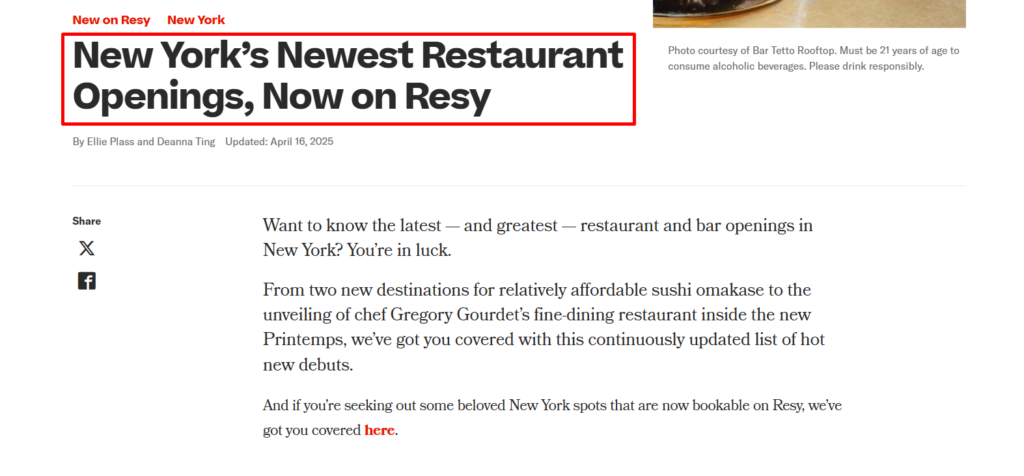
9. Create Unique, Localized Content
Make your content reflect your location and neighborhood. Use local references on your homepage and service pages, like “a cozy café in downtown Atlanta” or “family-owned steakhouse near Central Park.” Highlight community involvement, such as charity events, collaborations, or farmer’s markets. Create pages for different services or locations if you have multiple branches. Mention nearby landmarks or neighborhoods people search with, like “near [college],” “next to [museum],” etc.
This tells Google exactly where you operate and helps you rank in hyperlocal searches. Localised content also resonates more with visitors and shows you’re part of the community.
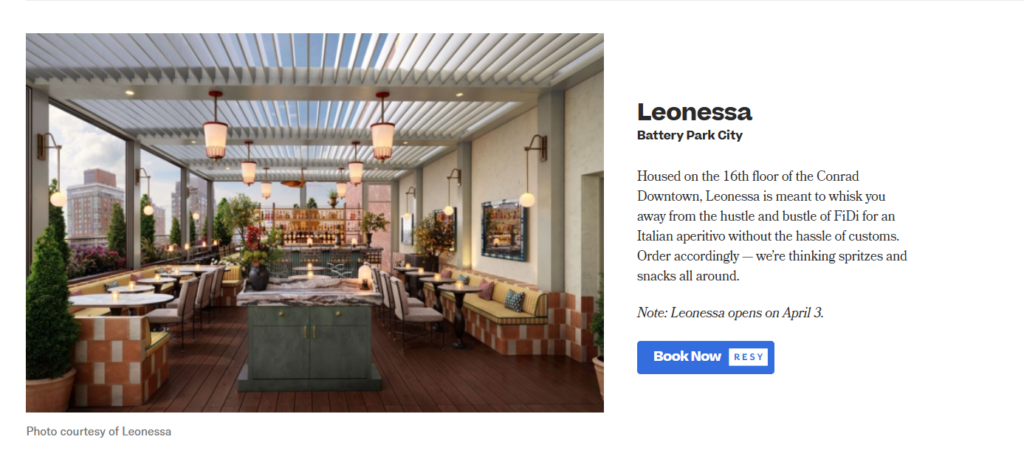
10. Use High-Quality Imagery Throughout
Great photos grab attention and make your site more engaging. Use high-resolution images of your dishes, dining areas, staff, and events. Include diverse shots—interior ambiance, food close-ups, and guests enjoying meals. Don’t forget image SEO: rename your files with descriptive names (e.g., grilled-salmon-new-york.jpg) and add ALT text.
This helps with search rankings and image results. High-quality visuals can boost conversion rates—diners are more likely to book when they see appealing images. Include photos on your homepage, gallery, and menu sections. They also enhance your Google Business Profile and third-party listings when reused consistently.
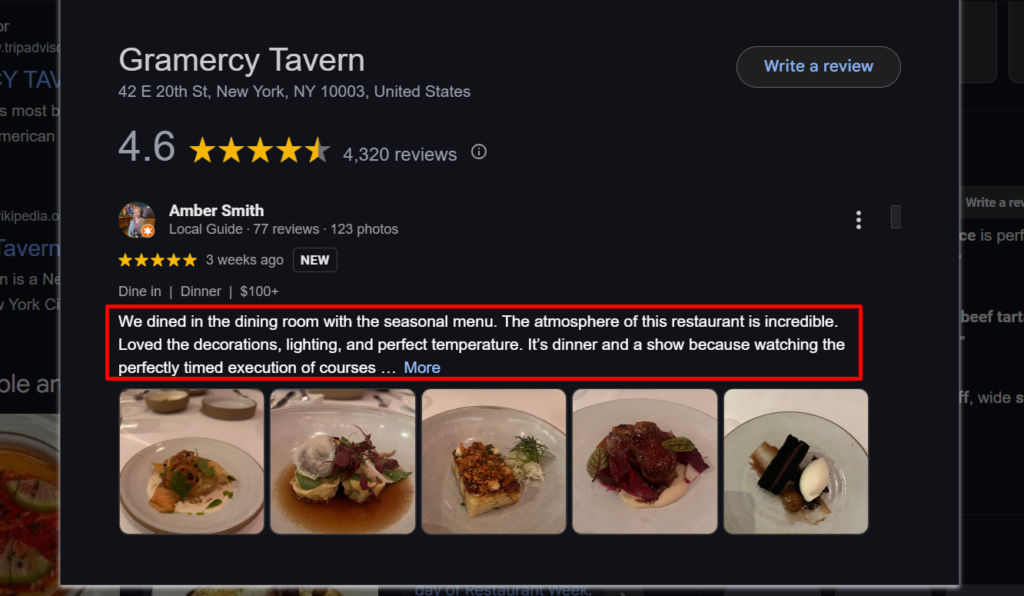
11. Encourage Customer Reviews
Online reviews are essential for restaurant credibility and local SEO. Encourage customers to leave reviews after dining. Use table signage with QR codes or follow-up emails with links to your Google, Yelp, or TripAdvisor profiles. Make it easy and polite—“We’d love your feedback!” Highlight positive reviews on your homepage or testimonials section.
Repeat reviewers can be rewarded with loyalty discounts or special offers. More reviews = more trust = higher click-through and search visibility. Google often pulls ratings into search results, so a good review score can also improve your rankings and attract more local diners.

12. Respond and Engage Reviews Publicly
Don’t just collect reviews—respond to them. Thank happy customers and address concerns with professionalism. Responding to feedback shows your restaurant is active, attentive, and trustworthy. Google and users both notice this engagement. Even negative reviews are a chance to turn things around publicly. Keep your tone friendly, personal, and respectful.
For example: “Hi Sarah, thanks for the feedback. We’re sorry the wait was long, and we’re reviewing our kitchen workflow.” It humanizes your brand and builds goodwill. Regular public engagement also supports your local SEO signals and keeps your Google Business Profile lively.
13. Get Quality Backlinks from Food/Local Sites
Links from reputable websites boost your authority. Reach out to food bloggers, local news sites, or influencers to feature your restaurant in reviews, interviews, or guides. Participate in community events and get mentioned on event websites. Join local business associations or sponsor school fairs and charity runs—these often link back to participating sponsors.
The more local and relevant the backlink, the better it is for SEO. Avoid buying spammy links or irrelevant sites—Google penalizes that. Aim for natural, high-quality links that reflect your value in the community. These backlinks help search engines trust your site more.
14. Use Social Media to Promote & Engage
Social media supports SEO by increasing visibility and engagement. Share behind-the-scenes videos, daily specials, chef tips, or customer shoutouts. Use Instagram, Facebook, Pinterest, and TikTok—whichever best fits your target audience. Encourage diners to tag your location and share their meals.
These user-generated posts extend your reach and can drive referral traffic to your website. Also, link to your menu or booking page in your bio or posts. Social platforms may not directly boost rankings, but they increase brand searches and traffic, both of which are positive signals to Google.
15. Implement Tracking & Analytics
Set up Google Analytics and Google Search Console to track how users find and use your site. Monitor metrics like bounce rate, time on site, and conversions (reservations or orders). See which keywords are bringing traffic and what content performs best.
Also, check insights from your Google Business Profile—calls, direction clicks, and photo views matter too. Data helps you make informed improvements. For instance, if blog posts drive a lot of traffic, publish more. If your menu page gets high traffic but low conversions, make it more appealing or add CTAs. Track what matters and adapt accordingly.
16. Conduct SEO Audits Regularly
Just like cleaning your kitchen, your website needs regular check-ups. Use SEO tools to audit site speed, mobile usability, broken links, duplicate content, and meta tag issues. Google Search Console can alert you to crawl errors or page indexing problems. Periodic audits help catch and fix issues before they hurt rankings.
Also, review your site’s structure—are your pages still well-linked? Is old content up-to-date? Are seasonal menus still active? Keeping your site clean and current signals quality to search engines and improves your user experience.
17. Measure What Matters
Traffic alone doesn’t pay the bills—track the metrics that tie back to your goals. Focus on online orders, reservations, direction clicks, phone calls, and form submissions. These are true signs that your SEO is working. Tools like Google Analytics, POS integrations, and call tracking can connect SEO performance with actual results.
Use these insights to refine your strategy—if reservations rise after a blog post or backlink, replicate that success. SEO should ultimately bring more diners through the door, not just visitors to your site.
How to Create a Local SEO Campaign for Your Restaurant Website?
To create a local SEO campaign for your restaurant, follow these points below:
- Claim and verify your Google Business Profile with accurate business details.
- Ensure NAP consistency (Name, Address, Phone) across directories like Yelp, TripAdvisor, and OpenTable.
- Target local keywords like “seafood restaurant near [city]” throughout your site content.
- Add schema markup (LocalBusiness and Restaurant) to help search engines read your business data.
- Earn local backlinks by collaborating with nearby vendors or event sponsors.
- Collect and respond to customer reviews regularly to strengthen trust and relevance.
For full campaign guidance, visit Effective Local SEO Campaign.
What are the Future Trends of Restaurant Search Engine Optimization?
The future trends of restaurant SEO focus on semantic search, AI personalization, and voice search optimization. Search engines now prioritize context and intent, not just keywords. Restaurants should create rich, question-based content like “What are the best gluten-free brunch spots near me?” to match how people speak during voice searches. AI in SEO is shaping how results are displayed, tailoring listings based on a user’s history, behavior, and preferences. Structured data, fast-loading mobile sites, and conversational content will become essential for long-term SEO success.
How to Create a Link-Building Strategy for Your Local Restaurant Site?
To build backlinks for your restaurant’s website:
- Partner with food bloggers or influencers to review or feature your restaurant.
- Get listed in roundup posts like “Top Vegan Cafés in [City].”
- Sponsor local events or charities and earn backlinks from organizers or media.
- Collaborate with nearby businesses for cross-promotional content.
- Reach out to local news or tourism sites for features or interviews.
Learn more in our Link Building Strategies Guide.
What Are Some of the Common Marketing Mistakes to Avoid for Restaurants?
The common marketing mistakes restaurants make include:
- Inconsistent NAP information across online platforms.
- Not optimizing for mobile devices leads to a poor user experience.
- Failing to respond to reviews affects customer trust.
- Overusing keywords or copying content across pages.
- Neglecting image optimization or slow website performance.
Avoid these pitfalls with help from our Restaurant Marketing Mistakes Guide.
What Are Some of the Local SEO Tools That I Use for Restaurant SEO?
Here are essential local SEO tools for restaurant websites:
- Google Business Profile Manager – manage your listing and insights.
- Moz Local – ensure consistency across directories.
- BrightLocal – monitor citations and local keyword performance.
- Google Search Console – track indexing, traffic, and errors.
- Whitespark – build citations and monitor local SEO rankings.
Explore more tools here: Local SEO Tools.
How to Create a User-Friendly Homepage for Your Restaurant Website?
To design a user-friendly restaurant homepage:
- Use a clear headline that reflects your restaurant’s offering and location.
- Display strong CTA buttons like “View Menu,” “Book Now,” or “Order Online.”
- Include visible contact info (phone, address, hours).
- Add customer reviews and images for social proof.
- Ensure the page loads quickly and is mobile-friendly.
Start designing with our Website Design Guide or get expert help via Website Design Service.
How to Choose a Good SEO Agency for My Restaurant Website?
To choose the right SEO agency for your restaurant:
- Look for restaurant-specific experience and case studies.
- Ask for transparent reporting and clear strategies.
- Avoid unrealistic promises like “#1 rankings in 7 days.”
- Check if they cover technical, local, and content SEO.
- Ensure they align with your business goals.
Learn what to ask and avoid: Choose a Good SEO Company or start your journey with Inflowen.
Tusar Ahmed is the Founder and Senior SEO Specialist at Inflowen. With over seven years of hands-on experience in SEO, local search optimisation, and keyword strategy, he simplifies complex digital concepts into engaging, actionable insights.
Tusar has worked on 250+ projects across the UK and beyond, helping businesses of all sizes improve their search visibility and achieve measurable growth. His writing blends technical expertise with a clear, approachable tone—making SEO feel both accessible and results-driven.
Follow his content for a fresh, practical perspective on ranking better, reaching the right audience, and staying ahead in the ever-evolving digital landscape.

